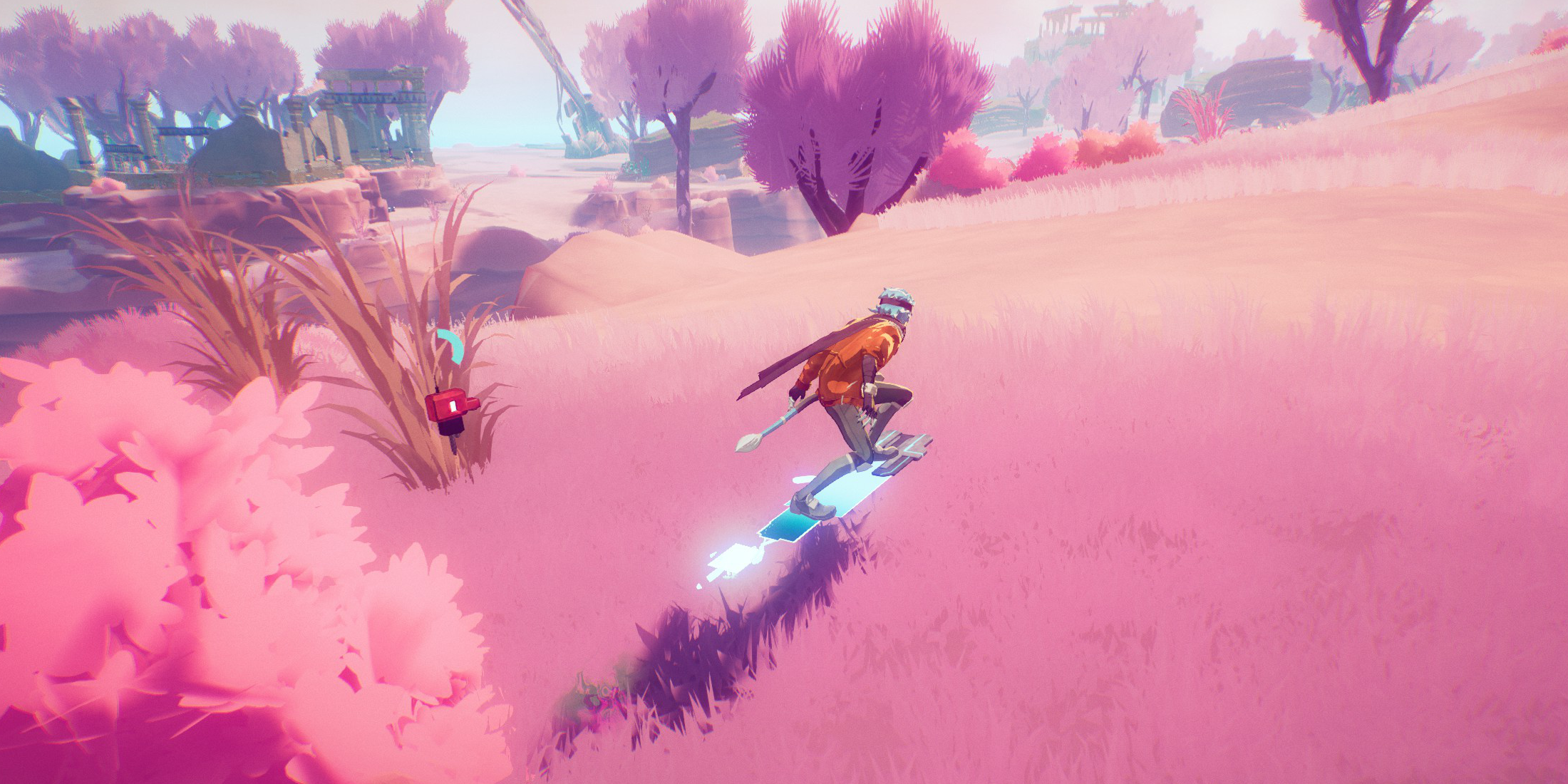Quick Links
Navigating the expansive, synthwave-inspired world of the Overgrowth in Hyper Light Breaker can feel daunting without the right tools. Thankfully, the game provides a Hoverboard right from the start, transforming your traversal from a tedious trek into an exhilarating ride. The Hoverboard not only serves as a sprint mechanic but also significantly boosts your movement speed, allowing you to cover vast distances while your Energy slowly depletes. This guide will walk you through how to summon and ride your Hoverboard, as well as highlight its key features that make it indispensable for exploring the Overgrowth.
How To Summon A Hoverboard In Hyper Light Breaker
 Summoning your Hoverboard in Hyper Light Breaker is straightforward. Simply hold down the Dodge input to initiate a dash forward, seamlessly transitioning into riding your Hoverboard as long as you keep the Dodge button pressed.
Summoning your Hoverboard in Hyper Light Breaker is straightforward. Simply hold down the Dodge input to initiate a dash forward, seamlessly transitioning into riding your Hoverboard as long as you keep the Dodge button pressed.
Steering the Hoverboard is intuitive. Use the left analog stick to lean and turn in your desired direction. At top speed, turns are more gradual, but at slower speeds, you'll find it easier to maneuver precisely.
To dismount, release the Dodge input. Be mindful of your Energy level, displayed next to your Breaker's companion while on the Hoverboard or Glider. If your Energy runs out, the Hoverboard will automatically de-summon, so take breaks to let your Energy recover and avoid unexpected dismounts.
Hoverboard Movement Tips & Special Uses
 While the Hoverboard in Hyper Light Breaker doesn't support tricks or combat, it offers unique functionalities that enhance your gameplay. One notable feature is its ability to float on water, allowing you to traverse inlets and rivers across the Overgrowth seamlessly. Remember, you must be on the Hoverboard before entering the water to ride across its surface; once submerged, you can't summon it.
While the Hoverboard in Hyper Light Breaker doesn't support tricks or combat, it offers unique functionalities that enhance your gameplay. One notable feature is its ability to float on water, allowing you to traverse inlets and rivers across the Overgrowth seamlessly. Remember, you must be on the Hoverboard before entering the water to ride across its surface; once submerged, you can't summon it.
Another useful technique is holding down the Jump input while on the Hoverboard to duck and prepare for a jump. Although you can't double-jump, the increased speed can help you leap over wider gaps. Ducking doesn't boost your speed or jump height, but it's crucial for timing jumps accurately, especially over challenging terrain.
















